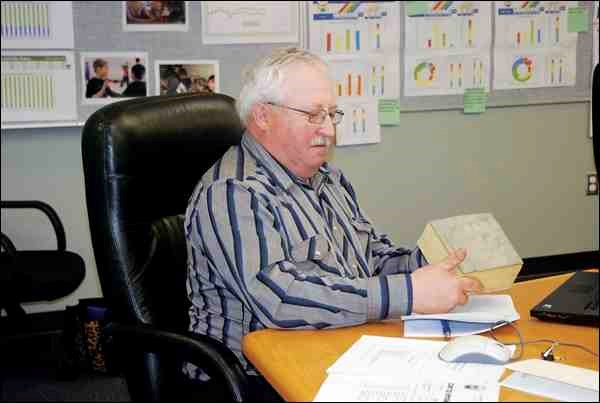There are a million square feet of roof throughout Living Sky School Division, and many of them need repair.
Living Sky School Division Facilities Manager Brian Bossaer says if current funding and practices remain the same, it would take 60 years to complete the projects identified right now.
But he has some ideas to change that.
Faced with a list of maintenance issues across the division that will take years to address at current funding, Bossaer told board of education members recently, "I'm trying to find ways how to do this different."
In one scenario, Bossaer would like to go with spray foam roofing, saying it is 20 per cent of the cost of traditional roofing.
"Eight million dollars would do the whole school division," he said, as opposed to $40 for traditional roofing.
Spray foam has been around for about 25 years and his research shows him people either love it or hate it. It has to do, he says, with how well the installation job is done. Sunwest School Division has three sections of roof done with spray foam, two done 10 years ago, and one done five years ago. They love it, he said.
However, he pointed out, "Spray foam doesn't have consistent rules."
One of the contractors the division uses has stayed away from spray foam precisely because there have been no standards.
Bossaer proposes to bring a roofing consultant, a contractor and a manufacturer together to determine the criteria for it to be done right.
"Let's create the standards and let's move forward," he said.
The worst case scenario is that it would cost three dollars a square foot to rip it off, said Bossaer. It's still a savings. Traditional construction can run between $35 and $50 a square foot.
He suggested using Hafford School as a test case. Of the approximately 300 sections of roof throughout the division, seven sections of Hafford's are in the top 25 worst.
Let's go for it," said Ron Kowalchuk, trustee responsible for Hafford School.
Trustee Glenn Wouters offered congratulations for thinking outside the box. He described it as a Lean activity, saying that could mean money might be available from the government to undertake a pilot project.
Director of Education Randy Fox said they should be talking to the province about it, but he wasn't hopeful there would be any extra money.
Board chair Ken Arsenault said, "If it works and it's putting our facilities into a condition higher than they are now for less dollars, that's good enough for me." He added, "If the ministry [of education] doesn't buy into it, so be it. If they do, you can write a Lean story if you want."
Fox said it wouldn't hurt to give the ministry a call to indicate the division is on the lookout for ways to save money and that it's prepared to try something different.
"We want them to be aware," said Fox. "If nothing else, selfishly, I want some credit to go to Brian and the board."
Wouters said, "If this does what it's supposed to do, I would hope every health board and every school board takes that wisdom and saves those dollars."
However, the education ministry has instituted an efficiency component in its funding model that clawed money back from school divisions for savings it is "expected" to effect.
If the division saves 80 per cent, is the ministry going to claw it back, Arsenault wondered. "That's my fear."
Bossaer had another strategy to share with the board. It had to do with cost savings in traditional construction.
The roof projects are identified by sections, not entire schools, so each time a section is addressed it requires a set up and take down cost of between $15,000 and $30,000.
"What a waste of money," said Bossaer.
If the division goes with traditional roofing, he would prefer to do "pick on" one school at a time.
"Nobody's done that before," he said.
However, he also said, "If I had my way, I'd go with spray foam," said Bossaer.
He will have more information to bring back to the board in about a month.
In other business, the board approved this year's budget. From an accrual viewpoint, a deficit of $1.76 million is expected, while from a cash viewpoint, a surplus of $1.5 million is expected.
The budget calls for taking $6.94 million out of the division's reserves for capital projects, the bulk of which will go to the $5 million renovation of North Battleford Comprehensive High School for adding Grades 7 and 8 to the population. The renovation will include a new gymnasium.
The division expects to receive property taxes in the amount of $23,650,000 and an instructional grant of $39,246,000.
The board also decided not to go along with a request from the Village of Meota to give up its share of any profits from the sale of the former school property there. The Village has asked for the division to waive a clause in the land sale agreement made when the division sold the school building to the village for a nominal fee that called for any profits after expenses to be split between them if the school property were to be sold. The Village would like to use the proceeds from the sale of part of the property for infrastructure improvements.
Board members said if the clause hadn't been included in the agreement they would have put the school property up for tender. All division taxpayers supported the school, so its sale should not benefit only those in Meota, they said.




